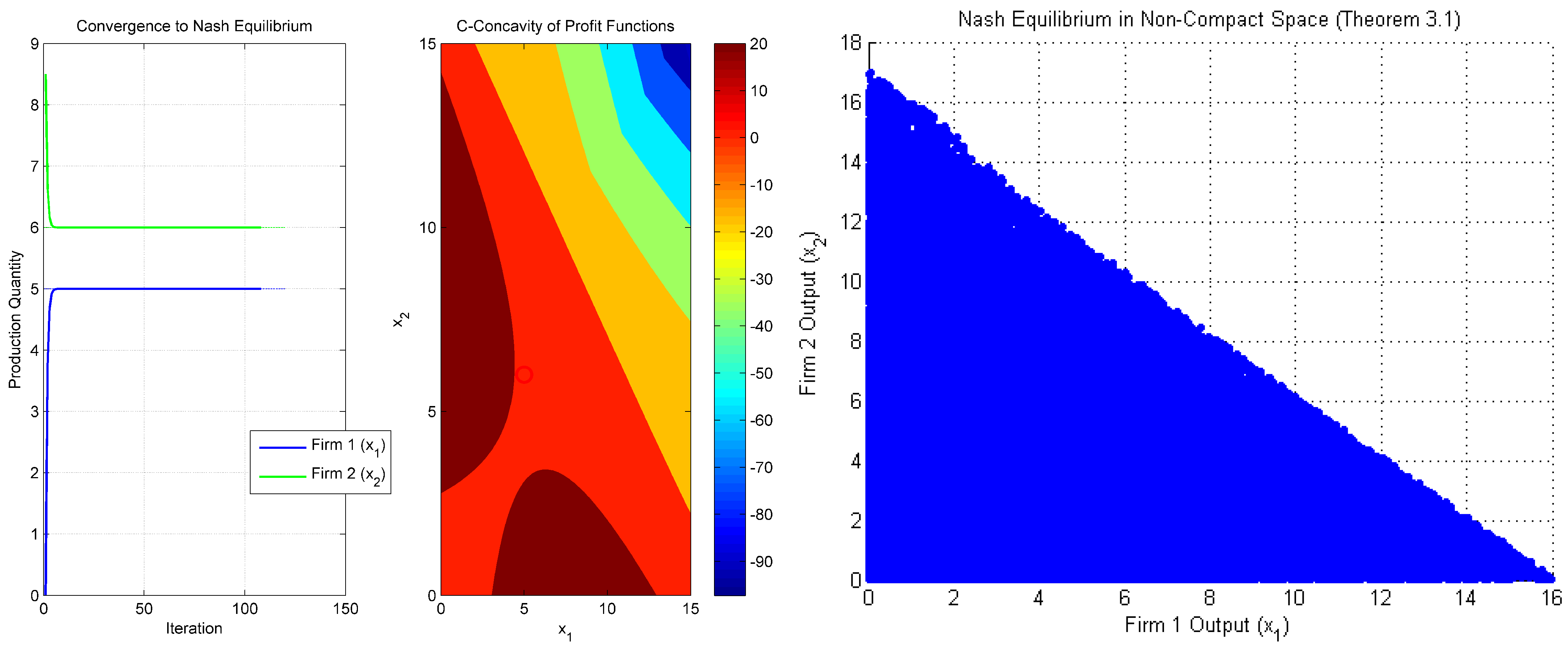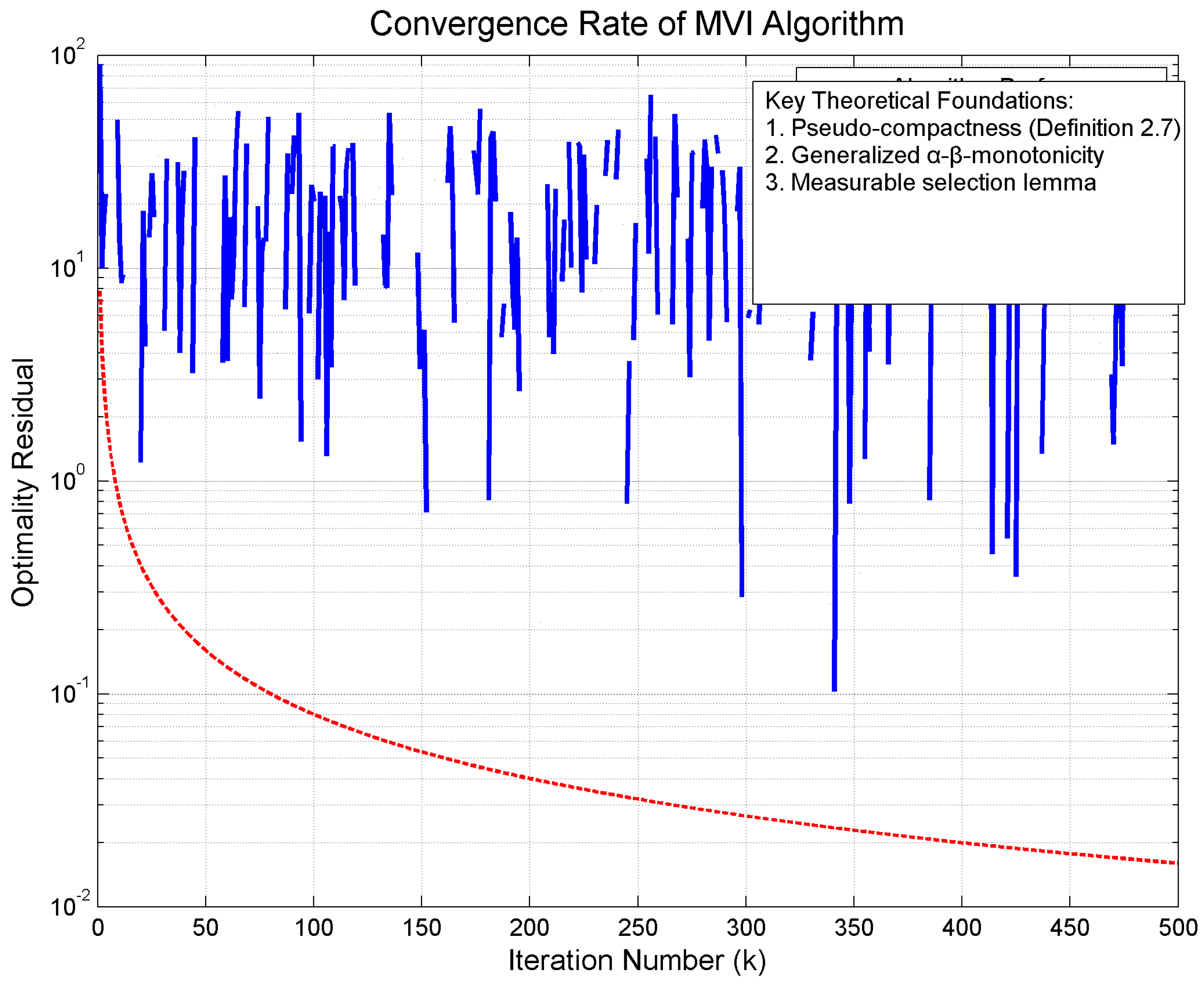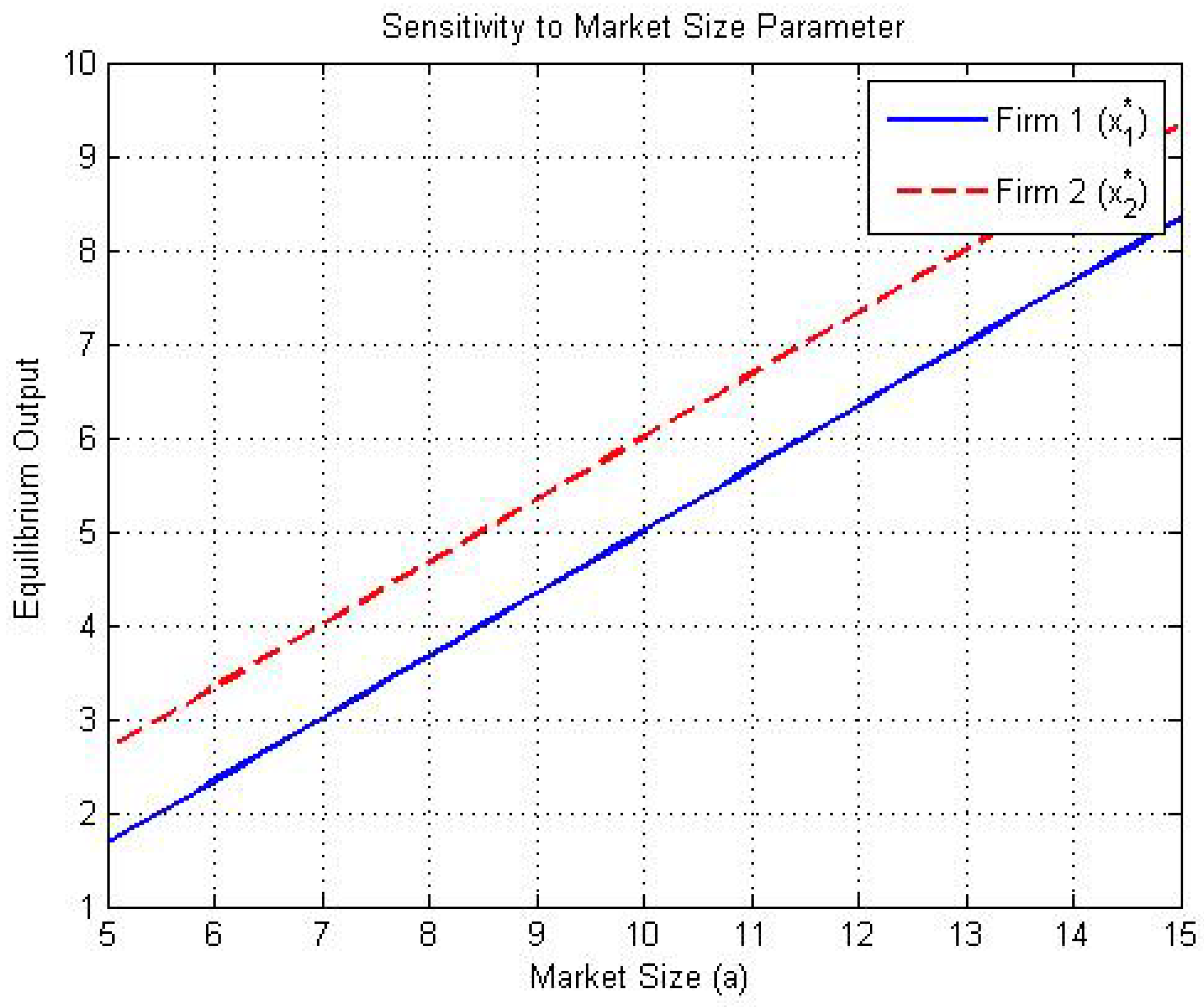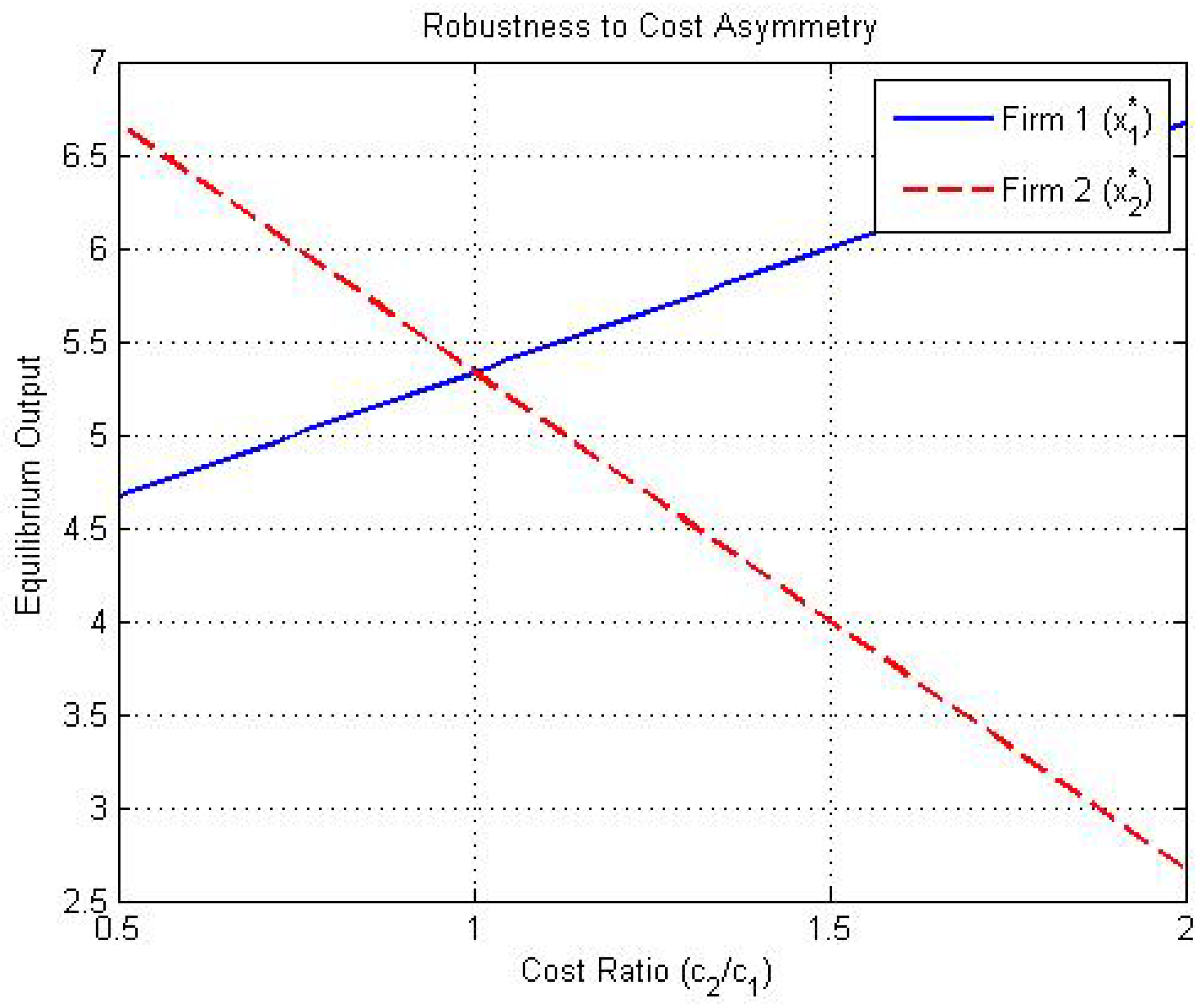Research on a Class of Set-Valued Vector Equilibrium Problems and a Class of Mixed Variational Problems
Abstract
1. Introduction
- The problem of set-valued vector equilibrium differs from the problem discussed in [1], and the proof method is also completely different. The Himmelberg fixed point theorem is mainly utilized to obtain the existence of solutions to the problem (SVEP1).
- Compared with [2], it is observable that the problem discussed in Theorem 2 is different from [2], particularly in terms of the method of proof. The main result of [2] is to use the theorem for discussion. The Himmelberg fixed point theorem is also utilized to obtain the existence result of the proposed problem (SVEP2).
- Theorem 5 discusses mixed variational problems under quasi compact conditions and improves and generalizes the results of recent literature on compact conditions, as shown in reference [3].
2. Related Work
3. Materials and Methods
- (1)
- is non-empty and has a convex value.
- (2)
- T has local intersection properties.
4. The Equilibrium Problem of Set Valued Vectors
- (1)
- There is , ; there is .
- (2)
- T is lower semi-continuous on E and C-lower semi-continuous for ,
- (3)
- T is concave, is convex with respect to x, and y is with respect to .
- (4)
- Mapping is C-upper semi-continuous.
- (5)
- C satisfies: for ; there exists such that
- (1)
- There exists , such that .
- (2)
- T is lower semi-continuous on E; is lower semi-continuous.
- (3)
- T is concave; is convex with respect to .
- (4)
- Regarding u, is upper semi-continuous.
- (1)
- is a convex value.
- (2)
- Regarding the first variable, H is C-concave and C-lower semi-continuous.
- (3)
- Regarding the first variable, G is C-lower semi-continuous.
- (1)
- Regarding the first variable, h is concave and lower semi-continuous.
- (2)
- Regarding the first variable, g is lower semi-continuous.
5. A Class of Mixed Variational Problems
- (1)
- (2)
- Regarding the first variable being hemi-continuous, is convex regarding the second variable. If MVI has a solution, it is equivalent to finding , such that
- (1)
- is convex and lower semi-continuous. is upper semi-continuous.
- (2)
- is related to the upper semi-continuity of the first variable.
- (3)
- is convex with respect to the second variable, .
- (1)
- K represents admissible material parameters (non-convex due to safety thresholds);
- (2)
- models stress-energy discrepancies;
- (3)
- encodes topological constraints.
6. Numerical Illustration
- (1)
- The measurable selection process (Lemma 4) suggests Monte Carlo sampling for economic models with uncertainty.
- (2)
- The pseudo-compact set D in Theorem 5 aligns with mesh adaptation in finite-element analysis.
7. Conclusions
- (1)
- Extending the pseudo-compactness framework to stochastic settings (building on [19]’s work) could address our current deterministic limitation.
- (2)
- Developing neural verifiers for C-concavity conditions (complementing [27]’s approach) would enhance applicability to high-dimensional problems.
- (3)
- Creating discrete approximations of our KKM mappings could enable finite-element implementations in engineering (extending [28]’s methodology).
Author Contributions
Funding
Data Availability Statement
Conflicts of Interest
Correction Statement
References
- Long, X.J.; Huang, N.J.; Teo, K. Existence and stability of solutions for generalized strong vector quasi-equilibrium problem. Math. Comput. Model. 2008, 47, 445–451. [Google Scholar] [CrossRef]
- Capata, A. Existence Results for Globally efficient Solutions of Vector Equilibrium Problems via a Generalized KKM Principle. Acta Math. Sci. 2017, 37, 463–476. [Google Scholar] [CrossRef]
- Farajzadeh, A.P.; Plubtieng, S.; Ungchittrakool, K.; Kumtaeng, D. Generalized mixed equilibrium problems with generalized α–η-monotone bifunction in topological vector spaces. Appl. Math. Lett. 2015, 265, 313–319. [Google Scholar] [CrossRef]
- Ansari, Q.H.; Oettli, W.; Schiager, D. A generalization of vector equilibrium. Math. Methods Oper. Res. 1997, 46, 147–152. [Google Scholar] [CrossRef]
- Ansari, Q.H.; Yao, J.C. An existence result for the generalized vector equilibrium. Appl. Math. Lett. 1999, 1999, 53–56. [Google Scholar] [CrossRef]
- Ansari, Q.H.; Chan, W.K.; Yang, X.Q. The system of vector quasi-equilibrium problems with application. J. Glob. Optim. 2004, 29, 45–57. [Google Scholar] [CrossRef]
- Abkar, A.; Tavakkoli, M. A new algorithm for two finite families of demicontractive mappings and equilibrium problems. Appl. Math. Comput. 2015, 266, 491–500. [Google Scholar] [CrossRef]
- Ciarcià, C.; Daniele, P. New existence theorems for quasi-variational inequalities and applications to financial models. Eur. J. Oper. Res. 2016, 251, 288–299. [Google Scholar] [CrossRef]
- Farajzadeh, A.; Lee, B.S.; Plubteing, S. On Generalized Quasi-Vector Equilibrium Problems via Scalarization Method. J. Optim. Theory Appl. 2016, 168, 584–599. [Google Scholar] [CrossRef]
- Farajzadeh, A.P. On the symmetric vector quasi-equilibrium problem via nonlinear scalarization method. J. Nonlinear Anal. Optim. Theory Appl. 2015, 6, 81–88. [Google Scholar]
- Jeong, J.U. Generalized viscosity approximation methods for mixed equilibrium problems and fixed point problems. Appl. Math. Comput. 2016, 283, 168–180. [Google Scholar] [CrossRef]
- Oliveira, H.A.; Petraglia, A. Solving generalized Nash equilibrium problems through stochastic global optimization. Appl. Soft Comput. 2016, 39, 21–35. [Google Scholar] [CrossRef]
- Wang, X.; López, G.; Li, C.; Yao, J.-C. Equilibrium problems on Riemannian manifolds with applications. J. Math. Anal. Appl. 2019, 473, 866–891. [Google Scholar] [CrossRef]
- Eslamizadeh, L.; Naraghirad, E. Existence of solutions of set-valued equilibrium problems in topological vector spaces with applications. Optim. Lett. 2020, 14, 65–83. [Google Scholar] [CrossRef]
- Pang, J.S.; Stewart, D.E. Differential variational inequalities. Math. Program. 2004, 113, 345–424. [Google Scholar] [CrossRef]
- Lin, L.J.; Tu, C.I. The studies of systems of variational inclusions problems and variational disclusions problems with applications. Nonlinear Anal. Theory Methods Appl. 2008, 69, 1981–1998. [Google Scholar] [CrossRef]
- Shehu, H. An iterative method for nonexpansive semigroups, variational inclusions and generalized equilibrium problems. Math. Comput. Model. 2014, 55, 1301–1314. [Google Scholar] [CrossRef]
- Che, H.; Li, M. The conjugate gradient method for split variational inclusion and constrained convex minimization problems. Appl. Math. Comput. 2016, 290, 426–438. [Google Scholar] [CrossRef]
- Salhi, N.; Aubin, J.P. Regulated Competition in Non-Convex Economies. J. Math. Econ. 2017, 89, 102–118. [Google Scholar]
- Luc, D.T. Theory of Vector Optimization; Springer: Berlin/Heidelberg, Germany, 1989; pp. 37–79. [Google Scholar]
- Fu, J.Y. Existence theorems and convexity of solution set on vector equilibrium problems. J. Glob. Optim. 2006, 36, 87–88. [Google Scholar] [CrossRef]
- Himmelberg, C.J. Fixed point of compact multifunctions. J. Math. Anal. Appl. 1972, 38, 205–207. [Google Scholar] [CrossRef]
- Schaefer, H.H. Topological Vector Spaces; Springer: Berlin/Heidelberg, Germany; New York, NY, USA, 1971; pp. 56–89. [Google Scholar]
- Aubin, J.P.; Ekeland, I. Applied Nonlinear Analysis; Wiley: New York, NY, USA, 1984; ISBN 978-0-471-04914-0. [Google Scholar]
- Bai, M.R.; Zhou, S.Z.; Ni, G.Y. Variational-like inequalities with relaxed η–α-pseudomonotone mappings in Banach spaces. Appl. Math. Lett. 2006, 19, 547–554. [Google Scholar] [CrossRef]
- Ansari, Q.H.; Schaible, S.; Yao, J.C. System of vector equilibrium problems 37 and its applications. J. Optim. Theory Appl. 2000, 107, 547–557. [Google Scholar] [CrossRef]
- Chen, L.; Santos, M.; Iwata, K. Instability Phenomena in Digital Platform Competition. Games Econ. Behav. 2022, 138, 205–224. [Google Scholar]
- Bourdin, B.; Francfort, G.A.; Marigo, J.-J. The variational approach to fracture. J. Elast. 2008, 91, 5–148. [Google Scholar] [CrossRef]





Disclaimer/Publisher’s Note: The statements, opinions and data contained in all publications are solely those of the individual author(s) and contributor(s) and not of MDPI and/or the editor(s). MDPI and/or the editor(s) disclaim responsibility for any injury to people or property resulting from any ideas, methods, instructions or products referred to in the content. |
© 2025 by the authors. Licensee MDPI, Basel, Switzerland. This article is an open access article distributed under the terms and conditions of the Creative Commons Attribution (CC BY) license (https://creativecommons.org/licenses/by/4.0/).
Share and Cite
Cheng, W.; Gong, W. Research on a Class of Set-Valued Vector Equilibrium Problems and a Class of Mixed Variational Problems. Mathematics 2025, 13, 2661. https://doi.org/10.3390/math13162661
Cheng W, Gong W. Research on a Class of Set-Valued Vector Equilibrium Problems and a Class of Mixed Variational Problems. Mathematics. 2025; 13(16):2661. https://doi.org/10.3390/math13162661
Chicago/Turabian StyleCheng, Wei, and Weiqiang Gong. 2025. "Research on a Class of Set-Valued Vector Equilibrium Problems and a Class of Mixed Variational Problems" Mathematics 13, no. 16: 2661. https://doi.org/10.3390/math13162661
APA StyleCheng, W., & Gong, W. (2025). Research on a Class of Set-Valued Vector Equilibrium Problems and a Class of Mixed Variational Problems. Mathematics, 13(16), 2661. https://doi.org/10.3390/math13162661





